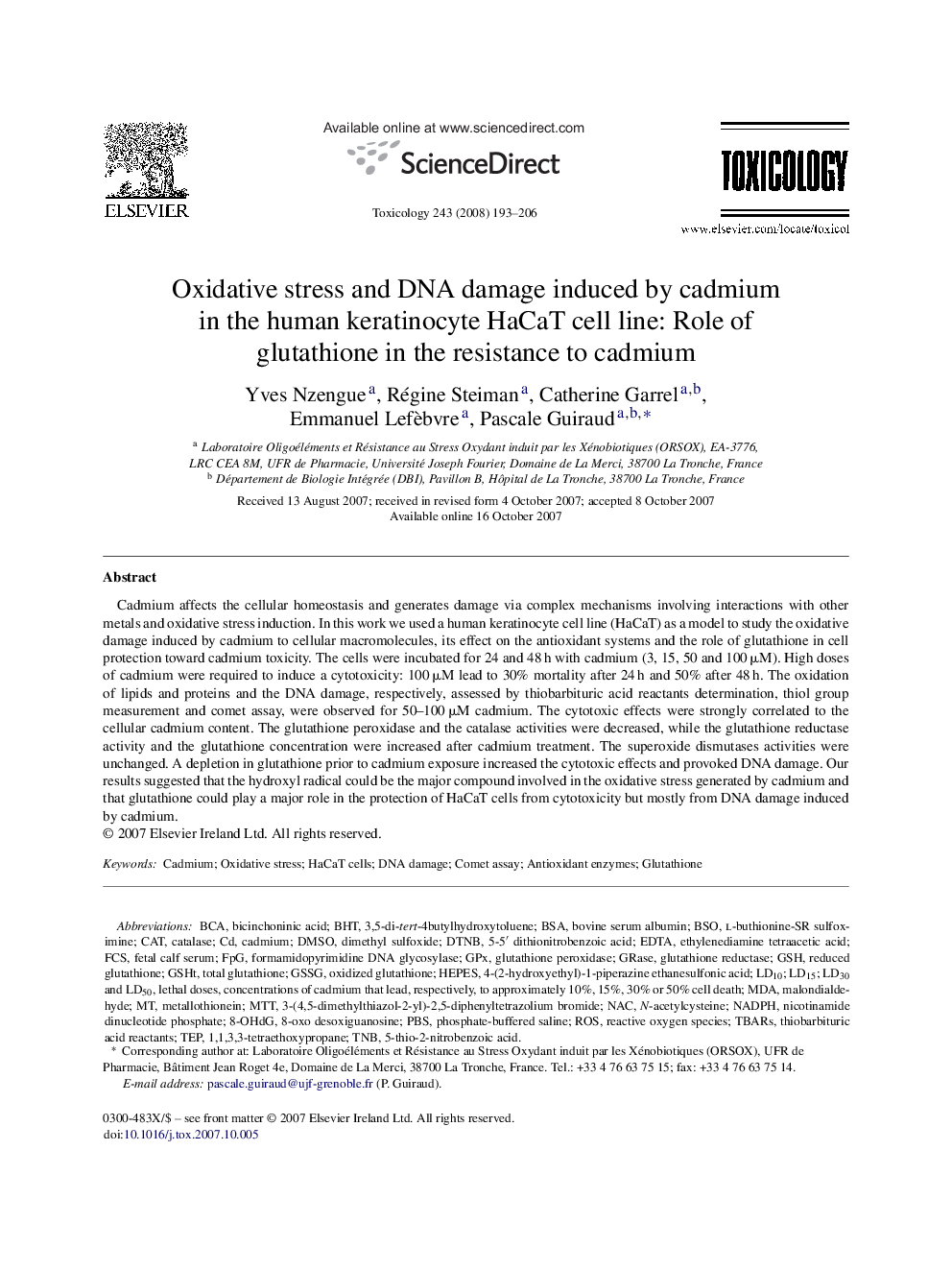| Article ID | Journal | Published Year | Pages | File Type |
|---|---|---|---|---|
| 2597421 | Toxicology | 2008 | 14 Pages |
Cadmium affects the cellular homeostasis and generates damage via complex mechanisms involving interactions with other metals and oxidative stress induction. In this work we used a human keratinocyte cell line (HaCaT) as a model to study the oxidative damage induced by cadmium to cellular macromolecules, its effect on the antioxidant systems and the role of glutathione in cell protection toward cadmium toxicity. The cells were incubated for 24 and 48 h with cadmium (3, 15, 50 and 100 μM). High doses of cadmium were required to induce a cytotoxicity: 100 μM lead to 30% mortality after 24 h and 50% after 48 h. The oxidation of lipids and proteins and the DNA damage, respectively, assessed by thiobarbituric acid reactants determination, thiol group measurement and comet assay, were observed for 50–100 μM cadmium. The cytotoxic effects were strongly correlated to the cellular cadmium content. The glutathione peroxidase and the catalase activities were decreased, while the glutathione reductase activity and the glutathione concentration were increased after cadmium treatment. The superoxide dismutases activities were unchanged. A depletion in glutathione prior to cadmium exposure increased the cytotoxic effects and provoked DNA damage. Our results suggested that the hydroxyl radical could be the major compound involved in the oxidative stress generated by cadmium and that glutathione could play a major role in the protection of HaCaT cells from cytotoxicity but mostly from DNA damage induced by cadmium.
